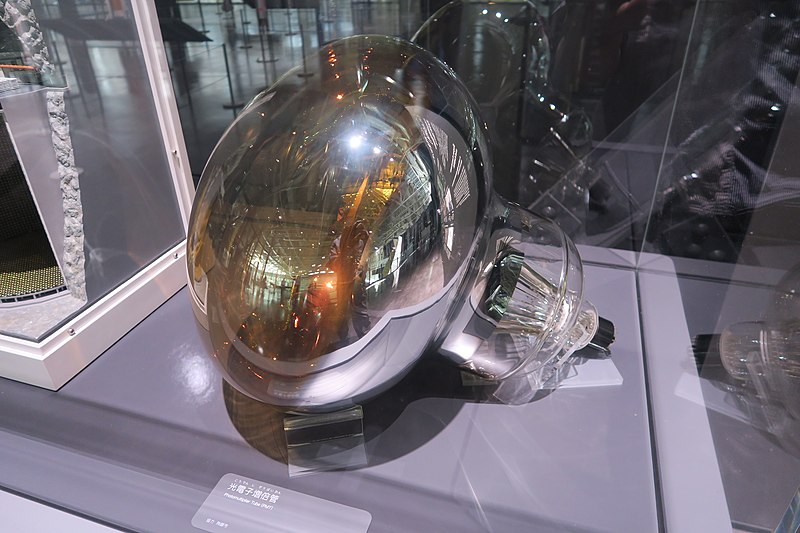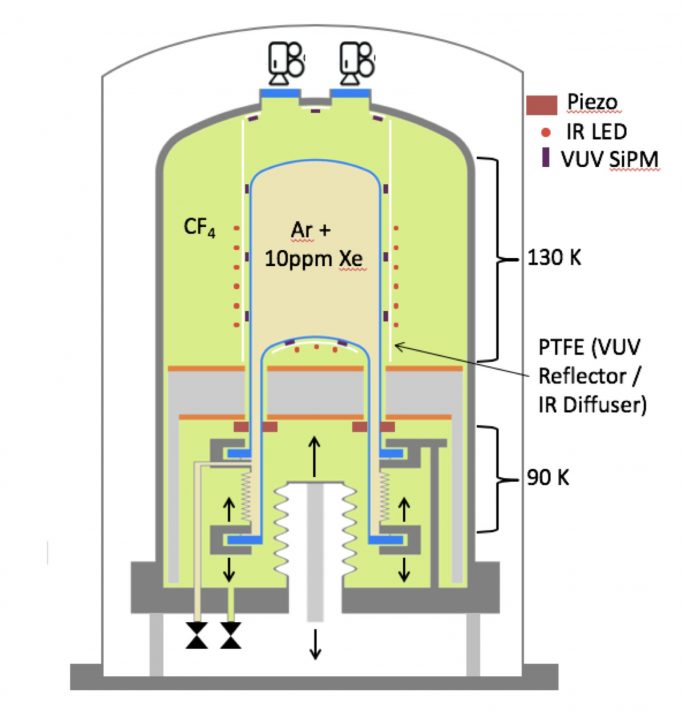Photo Detector Development
Many neutrino and dark matter experiments detect particle interactions by looking for the light created when a particle hits the detector medium. Detecting that light is a challenge because it is very faint.

Currently, photo-multiplier tubes (PMTs) are the most widely used tool for this purpose. However, they are expensive, relatively inefficient (<35%), and rather radioactive (which is problematic for these sensitive experiments). New technologies that could replace PMTs in astroparticle physics need to meet a number of challenging criteria: low radioactivity, large area coverage, high efficiency over many wavelengths of light, and the ability to detect single photons.
The Canadian astroparticle physics community is at the forefront of developing new light detection technologies. Although driven by astroparticle physics, these technologies will also provide solutions in other fields that need large area photo-detectors, like detecting radioactive material.

One example of development in this area is from a new experiment soon to be hunting for dark matter at SNOLAB called the Scintillating Bubble Chamber (SBC).This experiment builds on the knowledge gained from the PICO collaboration, and one of their goals is to collect the scintillation light with photodetectors. These light sensors will surround the PICO detector, with one of the main challenges being to develop sensors with low radioactivity. Silicon photomultipliers are planned to be used for this purpose, and they must be built into packages with casings that can withstand temperatures of –200 degrees Celsius.
Through its multi-institution collaboration, the McDonald Institute will enable the development of all aspects of photon detection pertaining to particle astrophysics applications.
